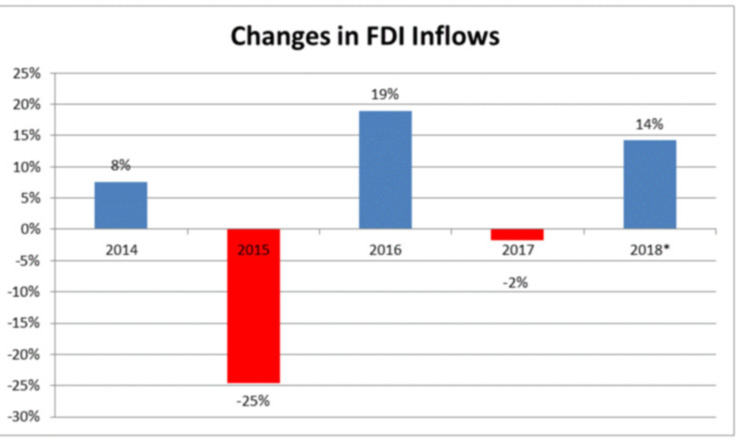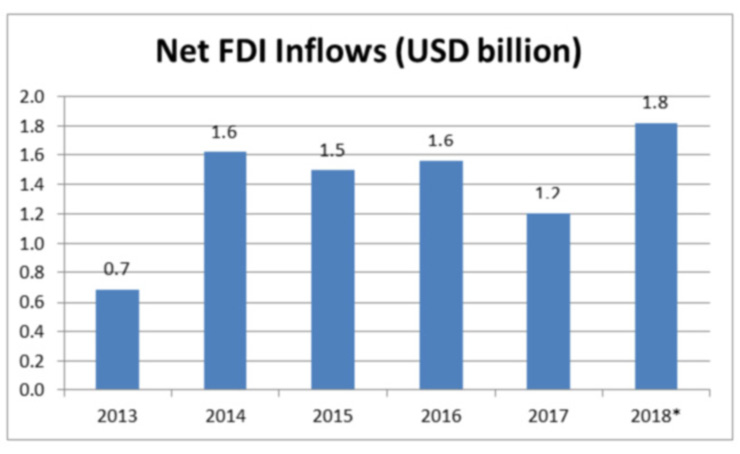Foreign investment inflows
surge 14 percent to $2.9 billion
Significant upturn compared to the decline in 2017
| Share |
|

|
|

|
|
|
|
Foreign direct investment (FDI) inflows are expected to have increased 14 percent to an estimated $2.9 billion in 2018 compared with the previous year, according to the ‘World Investment Report’ by the United Nations Conference on Trade and Development (UNCTAD).
“FDI flows in the [West Asia] sub-region remained uneven. Four countries – Turkey, the United Arab Emirates, Saudi Arabia and Lebanon – absorbed approximately 90 percent of FDI in West Asia,” the report said.
FDI inflows to Lebanon recorded a year-on-year decrease of two percent in 2017.
Despite 2018’s surge in FDI inflows, last year’s deficit in the balance of payments widened to $4.82 billion from a deficit of $156 million in 2017, according to BDL data.
The accumulated FDI inflows to Lebanon over the period 2013-2018 reached a total of $15.7 billion, with an annual average of $2.6 billion.

*Estimate
Source: UNCTAD, InfoPro
FDI outflows plunged 20 percent year-on-year in 2018 to $1.1 billion, according to the UNCTAD report. The drop in outflows and the increase in inflows resulted in a 51 percent surge in net FDI inflows, to $1.8 billion.
Overall FDI outflows reached $7.3 billion over the period 2013-2018 with an annual average of $1.2 billion.

*Estimate
Source: UNCTAD, InfoPro
Lebanon outperforms comparative regional countries and the average for the Middle East and North Africa in terms of FDI per capita and FDI per $1,000 of GDP, according to the UNCTAD’s ‘Investment Policy Review’, which was released earlier this year. The country will be able to boost FDI inflows further if it addresses a number of impediments to investment, improves the business environment, and focuses on the knowledge economy, the UNCTAD said in the report. The impediments include a mismatch between skills and job opportunities causing brain drain, weak female participation in the labor force, and energy supply shortages, as well as burdensome administrative requirements and institutional weaknesses.
Reported by Shikrallah Nakhoul
Date Posted: Jun 17, 2019
| Share |
|

|
|

|
|
|
|